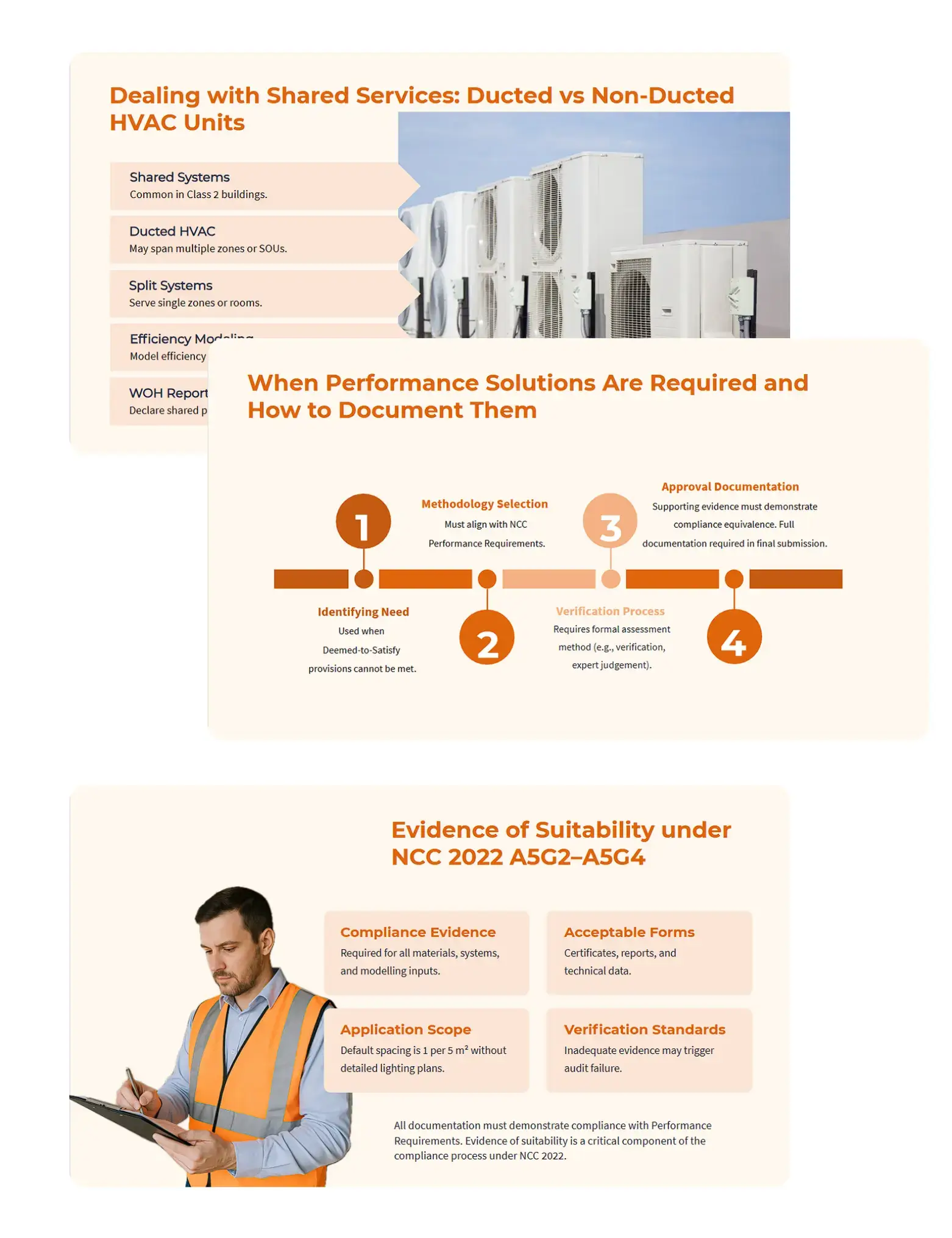Course Content
★★★★★
This formal CPD course is designed for professionals involved in energy efficiency and compliance assessments of multi-residential buildings in Australia, particularly those classified as Class 2 under the NCC 2022. It is ideal for NatHERS energy assessors, sustainability consultants, and architects who need to model thermal performance, fixed appliances, and shared systems accurately. The course addresses the complexities of shared walls, zoning overlaps, and central hot water systems, offering practical guidance on using proxies and documentation for compliance. Its goal is to equip participants with the knowledge and tools to deliver accurate, defensible assessments that meet NCC and NatHERS requirements.

This session is designed for

Energy Assessors

Architects

Building Designers

Building Surveyors

Sustainability Consultants
By the end of this session, you will be able to identify and address the unique challenges involved in modelling Class 2 apartments under the NatHERS and NCC 2022 frameworks. You’ll understand how to accurately represent shared construction elements, complex zoning, and fixed appliance systems in multi-residential buildings. The session will also teach you when and how to apply the central hot water system proxy, and when its use is inappropriate. Additionally, you’ll gain the skills to prepare thorough compliance documentation, including evidence of suitability and proxy justifications. This will ensure your assessments are both accurate and fully compliant with regulatory standards.
This ensures that CPD efforts align with professional regulatory requirements.
What’s Included
This course covers the key principles and practical steps for accurately modelling Class 2 multi-residential buildings under NatHERS and NCC 2022. It addresses the unique thermal performance challenges of shared walls, repeated layouts, and zoning in apartment settings. The course explains how to use the central hot water system proxy, including when it is appropriate and how to document its use. It also provides guidance on modelling fixed appliances and preparing complete, compliant documentation for regulatory approval.

Why Take This CPD Session?

Enhance your expertise in modelling complex Class 2 apartment buildings using the latest NatHERS and NCC 2022 requirements.

Avoid common compliance pitfalls by learning when and how to apply proxies, performance solutions, and accurate zoning techniques.

Improve assessment quality and audit readiness with practical guidance on documentation, stakeholder coordination, and Whole-of-Home modelling.
Professional development is an investment in career growth and regulatory compliance. Take the next step today.